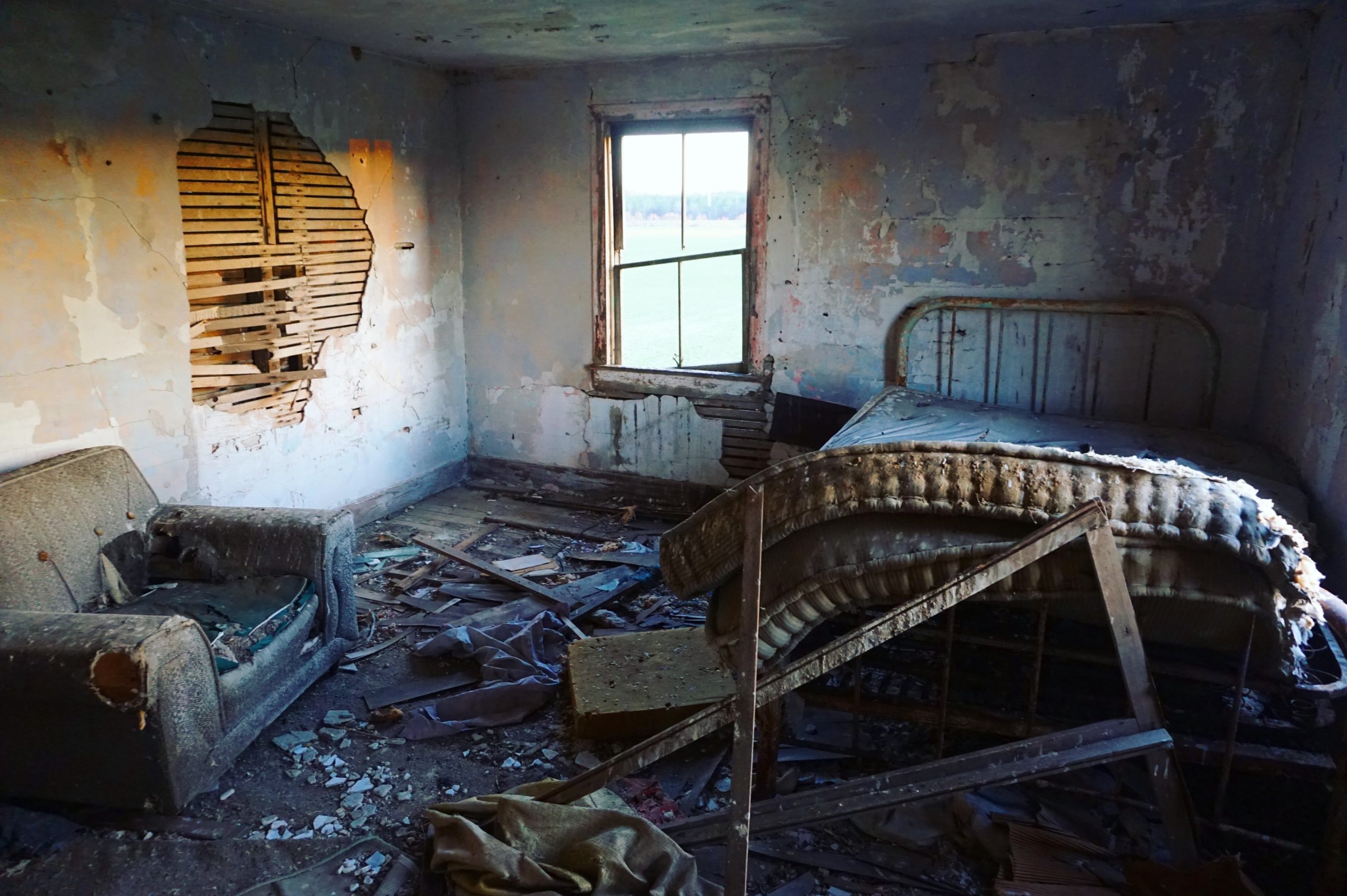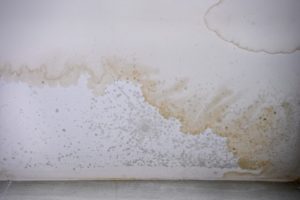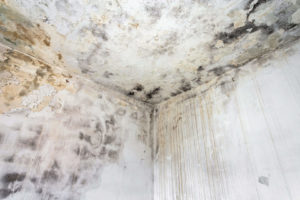Do you need mold removal and remediation services? At Save The Day Restoration, we’ve compiled the following comprehensive homeowner’s guide to mold, the damage it can cause, and what you should do if you discover mold growth in your home.
How Do You Define Mold Damage?
Though the occasional, minor case of mold can be relatively harmless if dealt with quickly, we certainly need to be vigilant in order to keep serious mold infestations from going out of control.
As soon as the mold starts to destroy the surface it’s growing on, that is when it’s considered mold damage.
Is Mold Damage That Big Of A Deal?
Yes, it’s a pretty big one. If you leave mold damage unaddressed, it can lead to the ceiling, walls, and even floors collapsing. Furthermore, mold exposure can have a significant impact on your health.
Does Mold Make You Sick?
Yes, mold can absolutely make you sick and we don’t recommend ignoring it, particularly in households with children, elderly persons, and pets.
At the mild end of the spectrum, you can get symptoms similar to having a cold or an allergy. Runny nose, irritated eyes, and so on. And it’s not just you, pets can also suffer from being in a moldy place.
Somewhere in the middle, mold can exacerbate existing health issues like asthma or other breathing problems.
In the most severe cases, people with compromised immune systems have died through exposure to mold.
We want to be clear that we don’t wish to alarm you too much as death from mold damage is very uncommon. Just bear in mind that your body reacts increasingly worse to mold exposure over time.
How Mold Affects The Structure Of Your Home
Mold eats almost anything. Your walls, ceilings, and foundations are made of materials that mold will try to break down and eat. This of course greatly weakens your home.
Apart from being ugly to look at, mold will cost you more the longer you leave it because it will just keep on eating into your home and growing further.
What If Mold Is Behind Drywall?
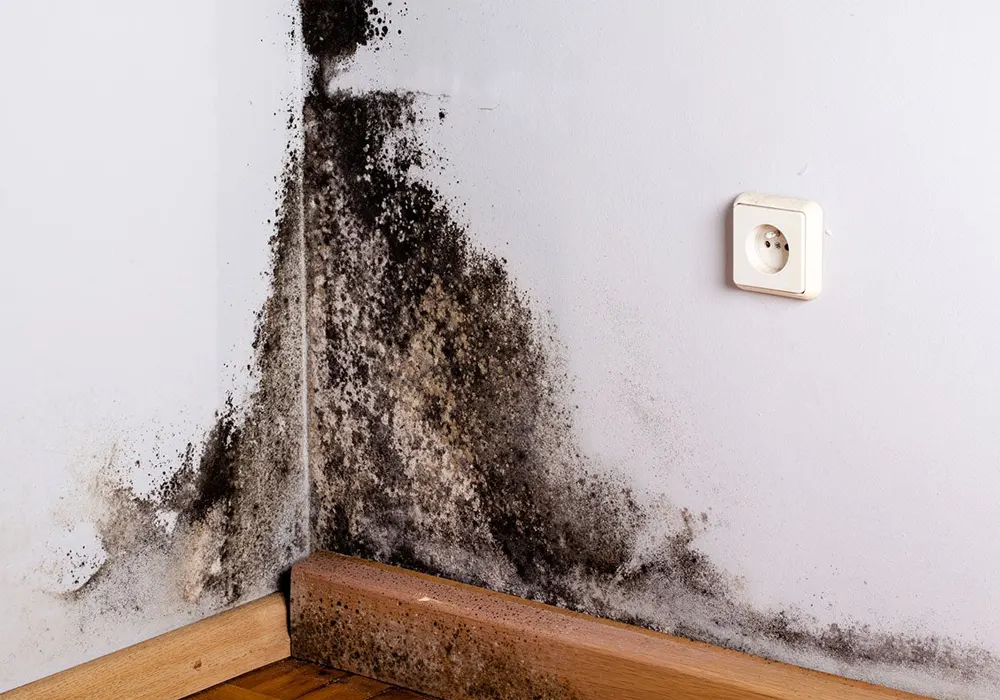
If there’s hidden mold damage, you may start to notice that the appearance of your drywall has changed. You may notice damp-looking stains, bubbling, or cracking. Is there a nasty odor, too?
It’s essential to call in a licensed mold remediation company like Save The Day Restoration to have a look at the extent of the damage. Mold behind drywall won’t just dry out in summer It’s very stubborn and spreads can spread continually if not dealt with properly.
Mold In The HVAC System
If you have mold inside your HVAC system, you could be breathing it in even in places that are far away from the main mold growth.
Mold likes secluded HVAC vents and moisture. The problem comes when you use your HVAC equipment and that mold is blown around your home or commercial premises.
You’re not only breathing it in over and over again, it’s spreading even further around.
When Is Mold Remediation Required?
A very small amount of mold that can be wiped off is no huge cause for concern.
The problem comes when mold has damaged the entire structure of a surface. In such cases, we need to remove the damaged parts and reconstruct the area. This is important because your mold-damaged walls, ceiling, or floor will be attractive, safe, and strong again.
Where Does Mold Come From In The First Place?
Mold comes from microscopic spores that float in the air. They need moisture and something to feed on.
Mold thrives in even, temperate conditions. It’s not just us that appreciate the pleasant Los Angeles climate. It’s also ideal for mold because it’s never too hot or too cold.
Where Does Mold Come From In Buildings?
In both residential and commercial properties, you can get mold from these sources.
-
A/C.
-
Inefficient ventilation.
-
Cooking with insufficient extractor fans.
-
Poorly sealed windows.
-
Leaky appliances.
-
Appliances that create a lot of steam, like coffee makers.
-
Blocked drains.
-
Pest infestations.
-
Humid surroundings, like the presence of a lake.
-
Storm damage.
-
Flooding.
-
Several people in the same space (it’s all that breathing).
Where Mold Comes From In The Home
-
Showers and baths.
-
Steam irons.
-
Washing machines.
-
Drying laundry indoors with no ventilation.
Where Mold Comes From In Commercial Properties
In businesses, there is often a lot of electrical or industrial equipment. Does the electronic equipment at your company emit heat?
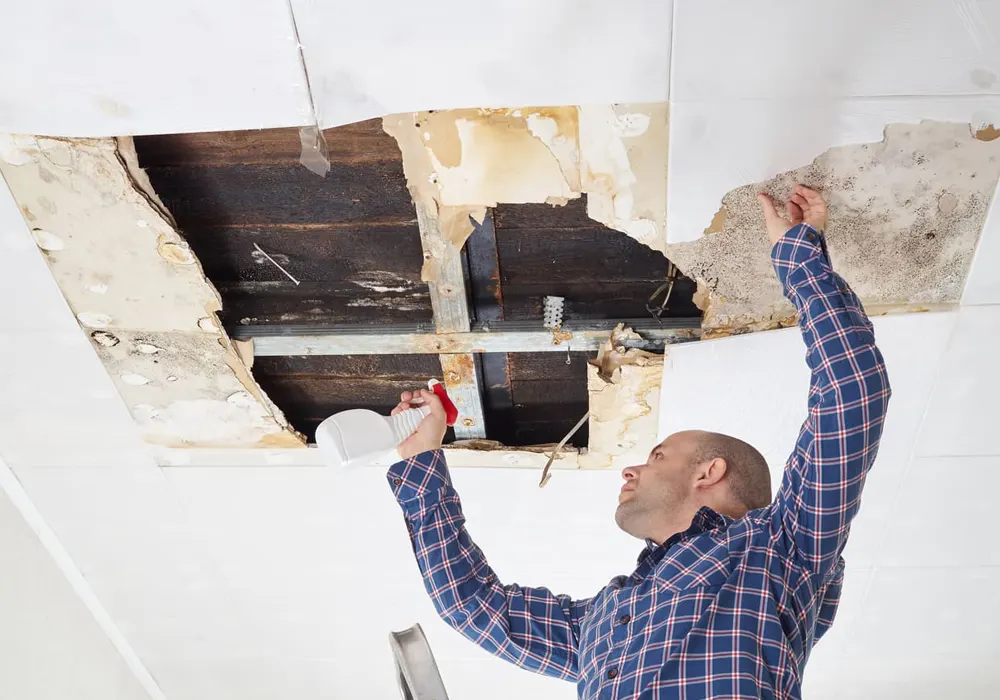
If so, it’s keeping the premises warm in winter. That doesn’t sound too bad, but the warmth is promoting condensation and that excess moisture can be enough to fuel mold growth.
Mold Testing
There are several different types of mold, so it’s essential to understand what we’re dealing with.
We need to carry out black mold remediation, for example, with even more care because it’s more dangerous.
How We Test Mold
First off, we’ll take samples of the mold from your property. Then we can test it and work out how to best go about mold remediation.
Save The Day Restoration follows mold testing procedures set out by the American Industrial Hygiene Association (AIHA), and the American Conference of Governmental Industrial Hygienists (ACGIH).
Mold Remediation Moisture Testing
Once we know what type of mold it is, we check if there’s any moisture hiding undetected.
In order to do this, we use specialized equipment to scan and test the area. It’s essential to dry everything thoroughly now so that the mold doesn’t come back.
Air Quality Testing For Mold
Another step that surprises our customers is that their mold remediation specialist will test the air. This is so that we can assess the concentration of mold spores.
The Types Of Mold You Should Know About
Below are the main types of mold that are likely to be present in your home or commercial property.
Cladosporium
This one can show up as spots on your surfaces that are a nasty black, green or yellow color. Alone, it often triggers allergic reactions, particularly on the skin.
Penicillium
Under a microscope, the spores of penicillium look like a paintbrush. It’s the same mold that eats into rotten food.
Penicillium is dangerous to anyone with a damaged immune system and if you eat or drink anything contaminated with it.
Stachybotrys Chartarum
Never heard of it? Probably because this type is most often referred to as black mold due to its dark color.
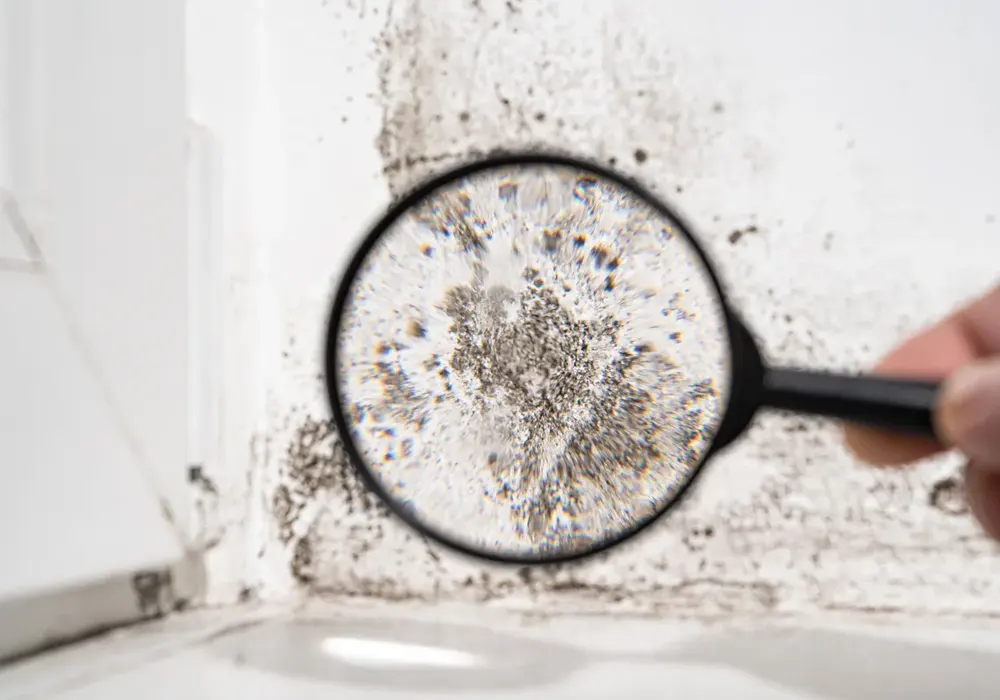
Black mold is a great danger to health, which is why even professional black mold remediation needs to be done with great care.
Aspergillus
This one is hard to pin down from the color alone because it can be black, white, yellow, green, or even brown. Aspergillus can be present in your food and A/C too.
It’s not usually harmful by itself (don’t get too excited, there’s more on that right below) but it can cause allergic reactions.
Mycotoxin
Mycotoxin is here on this mold list as a kind of honorary mention. Because strictly speaking, it isn’t a mold.
It’s actually a toxic substance that all the molds above can produce. Mycotoxin is even smaller than a mold spore but it’s very dangerous and can even cause cancer.
The Mold Remediation Process
Mold remediation and then restoration involves following a series of different procedures depending on what that case calls for. Here’s a general outline of what the mold remediation process looks like.
Personal Protective Equipment For Mold Removal
Mold damage is potentially very dangerous so our certified technicians wear industrial-grade personal protective equipment. Those mold spores are microscopic so everything has to be totally impenetrable.
That means eye protection, a high-grade filtration face mask, and gloves.
Mold Testing
In order to know how to best tackle the mold on your property, we’ll take several mold samples for testing. This will not only inform you of the health risks associated with that type but also inform us on how to proceed with eradicating it.
How We Contain That Dangerous Mold
Whatever type of mold it is, it needs to be contained. That’s because we don’t want the spores to travel to other parts of your property and take hold there. In order to do this, we make use of the following.
HEPA Air Scrubbers
These capture any mold particles in the air and trap them. Additionally, they will trap any other nasty particles like bacteria and asbestos.
Zip Walls
Those tough, flexible plastic walls that section off parts of the building. That means there’s no escape for the mold spores.
Mold Coatings
A mold coating is a protective treatment that we apply to the surface of the area affected by mold. Mold coatings extend the life of your building because they help inhibit mold growth in the future.
Mold Sealers
This is the cherry on the cake of your anti-mold treatment. Mold sealers repel mold from coming back to the same place in the future.
And this is important because if mold took hold once, it’s likely to try and come back again. For example, there’s a place in your home that you hardly go to, and it tends to be damp. Then mold will have a go another time.
Mold Removal And Disinfection
We know you want your property left as close to its pre-infestation condition as possible. However, if mold has damaged your drywall, ceiling, or floorboards too much, then it could be structurally unsafe. In that case, we’ll remove the damaged parts and replace them.
Don’t worry! Save The Day Restoration has been doing this for over 15 years, so we know how to leave the impacted area so it seems as though nothing ever happened.
Dehumidification
After we remove the mold, it’s very important to totally dry the area. It’s no good removing the mold and disinfecting the area if it’s still damp. That’s because mold loves moisture and will try to come back if anything’s damp.
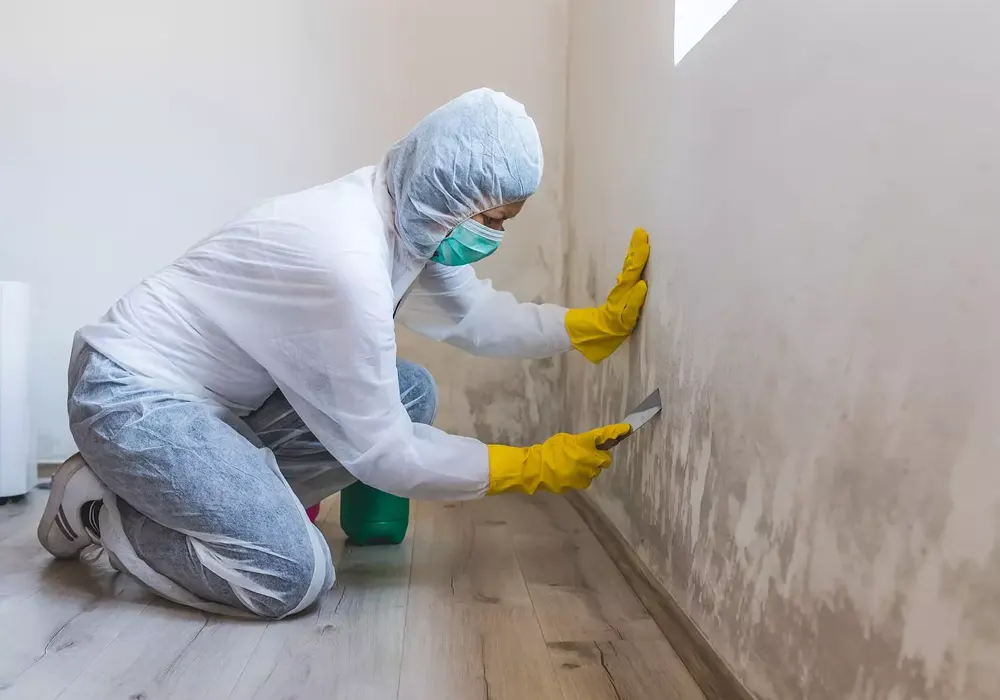
To prevent this, we run powerful dehumidifiers until everything is totally dry, inside the structure of your building and in the air.
Avoiding Cross-Contamination
After we treat the mold damage, we do a final check of your whole property. We want to make sure that those zip walls have been doing their job properly. When we’re satisfied that no spores have escaped, we get on with the restoring process.
Mold Damage Reconstruction
The primary goal is to now restore your property to its former glory. Save The Day Restoration takes pride in the ability to remove and replace a damaged surface to the point where our clients are shocked by the results.
Professional Equipment For Mold Remediation
Air Movers
These super fans blow mold spores out of your property to lower their concentration in your indoor environment.
In addition, they help dry the areas of your home which are damp so that you’re not encouraging future mold growth.
Air Scrubbers
Air scrubbers not only remove mold but also trap particles that you don’t want at home, like lead and allergens.
Dehumidifiers
One of our most effective tools is our industrial strength dehumidifiers, engineered to handle even the most humid conditions. They draw in the damp air, remove the moisture, and release the dry, healthy air back into your home. The liquid stays inside the dehumidifier so it can’t get back on your walls and feed any future mold.
Clearance Testing
Are you good to go? Let’s see.
Before finishing up, we do a total visual assessment for mold. Then, we test the air and solid materials for mold. The mold in your property needs to be completely gone, or at least at an extremely low level before we consider our work complete.
The Criteria We Use For Mold Clearance
#1. Is there additional mold damage on the same surface?
We need to significantly reduce the amount of mold spores or it will reproduce and come back as soon as the conditions are right.
#2. Is there any mold damage to other materials in your property?
Mold likes to hide in other places, so we make sure all the mold has gone from all potential hiding places
#3. Is there any lingering moldy smell?
That moldy smell usually points to hidden mold. If there’s a moldy smell, we’ll check inside things like drywall to catch the last trace of it.
Who Pays For Mold Remediation?
Mold remediation usually falls to the homeowner, but make sure to check your policy thoroughly just in case. If you have separate mold coverage, your event may indeed be covered and it is worth contacting your insurance provider.
If your home is prone to mold (it’s near a lake or stream, for example), it’s worth considering separate mold coverage for future mold issues.
Does Homeowners Insurance Cover Mold Remediation?
No, it generally doesn’t. That’s unless the mold damage was very sudden, and your insurance company considers that you did absolutely everything you could to prevent mold from happening.
Home insurance providers are a lot more lenient on water damage than mold. That’s because water damage happens suddenly and mold takes at least a day.
You’re likely to have to prove that the mold happened suddenly and you did the best you could to call in the mold removal specialists ASAP. Did we mention that Save The Day Restoration is a mold remediation company that provides 24/7 services?
Learn more about mold and insurance in our blog post.
Call For A Professional Mold Remediation Specialist At Your Los Angeles Home Or Business
When it comes to mold, you need technicians who do the job perfectly, the first time. Save The Day Restoration is a highly-rated mold remediation and restoration company serving customers in Southern California.
Don’t take any chances with the structural integrity of your property, or your family’s health. Call us at (562) 246-9908 to get started with your personalized mold remediation service today.

